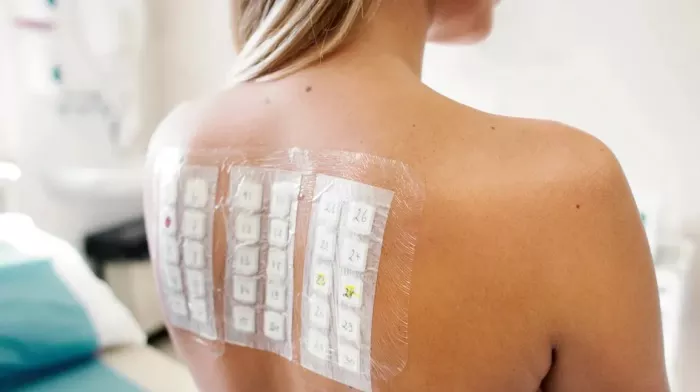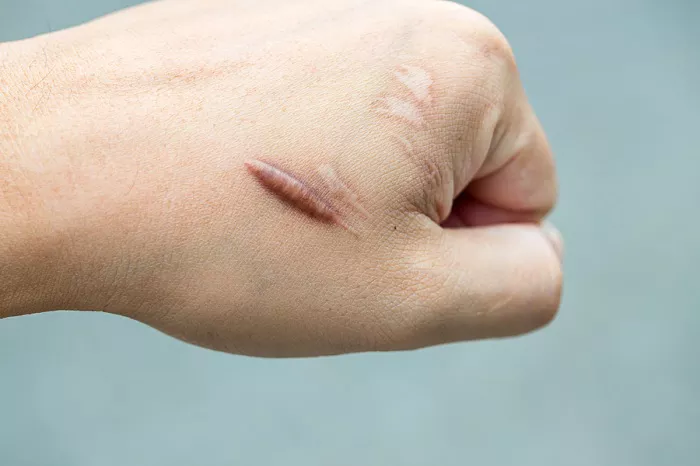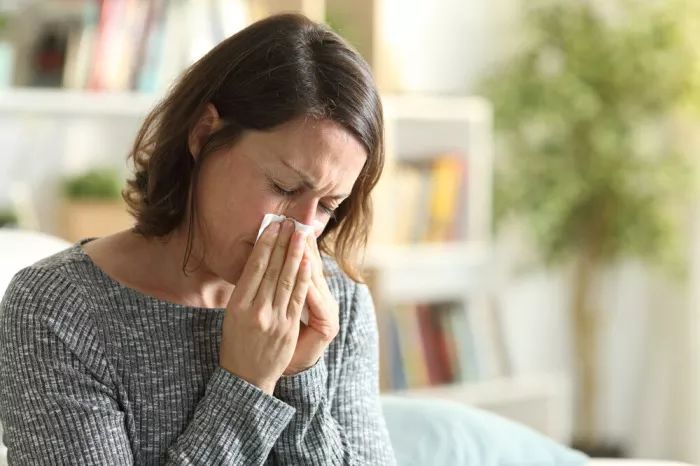Embarking on a journey of body piercing is an expression of individuality, but for some, it may lead to the development of keloids, a type of raised scar. Keloid piercing is a common concern, characterized by an overgrowth of scar tissue beyond the boundaries of the original wound. While professional medical advice is crucial, there are also home remedies that individuals can explore to manage keloids associated with piercings. In this comprehensive guide, we delve into the world of keloid piercings, exploring the causes, prevention, and effective home remedies for a comfortable healing process.
Understanding Keloid Piercing
Keloids are an abnormal response to skin injury, including piercing. In the context of piercings, keloids often occur when the body overproduces collagen during the healing process, leading to the formation of raised, thickened scars. Keloid piercing can be visually distinctive, extending beyond the original piercing site and varying in color and texture.
Several factors contribute to the development of keloids, including genetic predisposition, skin type, and the location and type of piercing. Individuals with a family history of keloids may be more susceptible to their formation. Additionally, cartilage piercings, such as those in the ears or nose, are more prone to keloid development compared to soft tissue piercings.
Preventing Keloid Formation
Preventing keloid formation is an essential aspect of managing keloid piercing. While some factors, such as genetics, are beyond control, there are proactive measures that individuals can take to minimize the risk of keloid development:
Choose Professional Piercers: Opting for experienced and professional piercers who adhere to proper hygiene practices reduces the risk of complications during the piercing process. Proper technique and sterile equipment contribute to a healthier healing environment.
Avoiding Cartilage Piercings: Given the increased risk associated with cartilage piercings, individuals concerned about keloid formation may choose piercings in soft tissue areas. Areas such as the earlobe, which contains less cartilage, may be less prone to keloid development.
Aftercare Practices: Diligent aftercare is crucial for promoting healthy healing and reducing the risk of keloids. Following the aftercare instructions provided by the piercer, which typically include cleaning the piercing with saline solution and avoiding unnecessary manipulation, contributes to a smoother healing process.
Avoiding Trauma: Minimizing trauma to the piercing site is essential. This includes avoiding excessive movement, pressure, or trauma to the pierced area, especially during the initial healing stages.
Hydration and Nutrition: Maintaining overall skin health through proper hydration and nutrition supports the body’s natural healing processes. A well-balanced diet and adequate water intake contribute to skin elasticity and regeneration.
Identifying Keloid Piercing
Recognizing the symptoms and characteristics of keloid piercing is crucial for early intervention and management. Keloids typically exhibit the following features:
Raised Appearance: Keloids are characterized by their raised, elevated appearance beyond the borders of the original wound or piercing site. The elevation may vary, and the keloid can extend both horizontally and vertically.
Color Variations: Keloids may have different colorations compared to the surrounding skin. They can range from pink to red or brown, and the texture may differ from the surrounding tissue.
Itching or Discomfort: Keloids may be accompanied by itching or discomfort. While not everyone with a keloid experiences these symptoms, any unusual sensations around the piercing site should be monitored.
Growth Over Time: Keloids can continue to grow over time, sometimes extending beyond the initial healing period of the piercing. Monitoring changes in size and appearance is essential for early intervention.
Home Remedies for Keloid Piercing
While professional medical advice is paramount for managing keloid piercing, there are several home remedies that individuals can explore to alleviate symptoms and promote a comfortable healing process. It’s essential to note that results may vary, and any persistent or worsening symptoms should prompt consultation with a healthcare professional.
Saline Solution Soaks:
Saline solution is a gentle and effective home remedy for keloid piercing. Mixing a solution of non-iodized sea salt and warm water creates a mild saline solution. Soaking the piercing in this solution for 5-10 minutes, several times a day, helps cleanse the area and promote healing. Ensure the solution is mixed in appropriate proportions to avoid irritation.
Tea Tree Oil:
Tea tree oil, known for its antimicrobial properties, can be diluted and applied to the keloid-affected area. Mixing a small amount of tea tree oil with a carrier oil, such as coconut or jojoba oil, creates a solution that can be gently massaged onto the keloid. It’s crucial to perform a patch test first to check for any adverse reactions.
Lemon Juice:
Lemon juice, with its natural acidity, is believed to have mild exfoliating properties. Applying freshly squeezed lemon juice to the keloid and allowing it to sit for a few minutes before rinsing with water may help in reducing the appearance of the keloid. However, caution is advised as lemon juice may cause skin irritation in some individuals.
Aloe Vera Gel:
Aloe vera gel, renowned for its soothing and anti-inflammatory properties, can be applied to the keloid. The gel may help alleviate discomfort, reduce redness, and contribute to overall skin health. Ensure the aloe vera gel used is pure and free of added irritants.
Pressure Earrings:
Pressure earrings or compression devices designed specifically for keloids may be considered as part of home remedies. These devices exert continuous pressure on the keloid, potentially helping to flatten it over time. It’s essential to follow the product instructions and consult with a healthcare professional before using such devices.
Silicone Gel or Sheets:
Silicone gel or sheets are commonly used for scar management, including keloids. These products create a barrier over the keloid and may help reduce its size and appearance. Consistent and prolonged use is typically recommended for optimal results.
Wound Healing Vitamins:
Certain vitamins and supplements are believed to support wound healing and skin health. Vitamin E, known for its antioxidant properties, is often recommended for scar management. It can be applied topically or taken as a supplement. However, individual responses to vitamin E may vary, and it’s advisable to consult with a healthcare professional before supplementation.
Cryotherapy:
Cryotherapy involves applying extreme cold to the keloid, potentially reducing its size and appearance. Ice packs or specialized cryotherapy devices can be used for this purpose. However, caution is advised, and it’s crucial to avoid prolonged exposure to extreme cold to prevent skin damage.
Consulting Healthcare Professionals
While home remedies can be explored for comfort and symptom management, consulting with healthcare professionals is crucial for a comprehensive approach to keloid piercing. Dermatologists, plastic surgeons, or healthcare providers with expertise in skin conditions can provide personalized guidance and interventions. Some professional treatments for keloids include:
Corticosteroid Injections:
Corticosteroid injections involve the direct injection of steroids into the keloid. This treatment aims to reduce inflammation and inhibit the overproduction of collagen. Multiple sessions may be required, and results can vary.
Laser Therapy:
Laser therapy utilizes various types of lasers to target and break down keloid tissue. This treatment may help reduce the size and redness of keloids. Multiple sessions may be necessary, and the choice of laser depends on the characteristics of the keloid.
Surgical Excision:
Surgical excision involves removing the keloid through a surgical procedure. This approach is often combined with other treatments, such as corticosteroid injections or radiation therapy, to minimize the risk of keloid recurrence.
Radiation Therapy:
Radiation therapy, typically used in combination with other treatments, aims to reduce the regrowth of keloid tissue after surgical excision. It’s essential to weigh the potential benefits against the risks associated with radiation exposure.
Cryotherapy:
Professional cryotherapy involves the controlled application of extreme cold to the keloid. This method is performed by healthcare professionals and requires expertise to prevent skin damage.
Long-Term Care and Monitoring
Effectively managing keloid piercing involves long-term care, monitoring, and collaboration with healthcare professionals. After implementing home remedies or professional treatments, individuals should adhere to the following practices:
Consistent Aftercare:
Continuing diligent aftercare practices, as recommended by healthcare professionals or piercers, contributes to ongoing healing and prevents complications.
Regular Follow-Ups:
Regular follow-up appointments with healthcare professionals allow for monitoring the keloid’s progress, adjusting treatment plans as needed, and addressing any concerns.
Protecting from Trauma:
Protecting the keloid from trauma is crucial. Avoiding unnecessary pressure, friction, or trauma to the keloid helps prevent irritation and potential exacerbation.
Sun Protection:
Sun protection is essential for keloid management. Keloids may be more susceptible to hyperpigmentation from sun exposure, so applying sunscreen to the area can help mitigate this risk.
Maintaining Overall Skin Health:
Supporting overall skin health through proper hydration, a well-balanced diet, and lifestyle practices contributes to the body’s natural healing processes.
Addressing Individual Concerns and Expectations
Each individual’s experience with keloid piercing is unique, and addressing specific concerns and expectations is integral to the management process. Factors such as pain tolerance, aesthetic preferences, and individual responses to treatments vary, highlighting the importance of a personalized approach.
Pain Management:
Pain management is a significant aspect of keloid piercing care. Over-the-counter pain relievers, as recommended by healthcare professionals, can help alleviate discomfort.
Aesthetic Considerations:
Aesthetic considerations are subjective and vary among individuals. Open communication with healthcare professionals about aesthetic preferences, including scar appearance and texture, allows for collaborative decision-making.
Realistic Expectations:
Having realistic expectations is crucial. Keloid management is an ongoing process, and complete resolution may not be achievable in all cases. Open and transparent communication with healthcare professionals helps set realistic expectations.
Emotional Support:
The emotional impact of keloid piercing should not be overlooked. Seeking emotional support from friends, family, or support groups can provide valuable encouragement and understanding throughout the journey.
Conclusion
In conclusion, keloid piercing is a unique aspect of body modification that requires careful attention and management. While home remedies can contribute to symptom relief and comfort, consulting with healthcare professionals is paramount for a comprehensive approach to keloid care.
Understanding the causes, recognizing symptoms, and exploring preventative measures contribute to proactive keloid management. Home remedies such as saline solution soaks, tea tree oil, and aloe vera gel offer potential relief, but it’s essential to approach them with caution and under professional guidance.
Collaborating with healthcare professionals allows for personalized treatment plans, incorporating interventions such as corticosteroid injections, laser therapy, or surgical excision. Long-term care involves consistent aftercare, regular follow-ups, and addressing individual concerns and expectations.
Navigating the path to comfortable healing involves a blend of home remedies, professional interventions, and emotional support. By taking a proactive and individualized approach to keloid piercing, individuals can work towards managing symptoms, achieving optimal comfort, and embracing their unique journey of self-expression.
[inline_related_posts title=”You Might Be Interested In” title_align=”left” style=”list” number=”6″ align=”none” ids=”3260,3257,3255″ by=”categories” orderby=”rand” order=”DESC” hide_thumb=”no” thumb_right=”no” views=”no” date=”yes” grid_columns=”2″ post_type=”” tax=””]

































